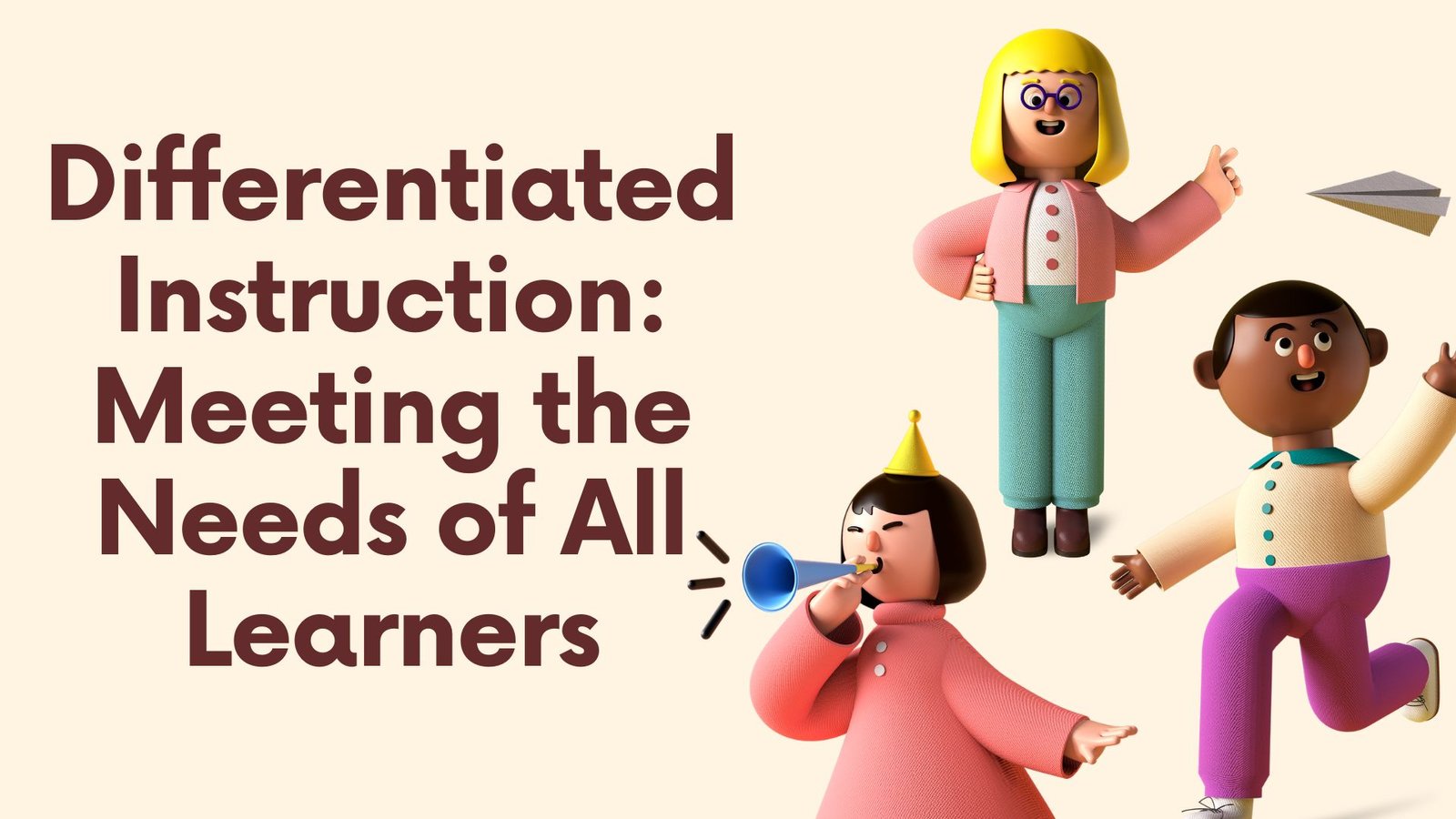

Differentiated Instruction: Meeting the Needs of All Learners
As teachers, we know that every classroom is made up of diverse learners. Each student brings their unique strengths, weaknesses, and learning styles. In such an environment, how can we ensure that every student gets the most out of their education? The answer lies in differentiated instruction—a teaching strategy designed to cater to the individual needs of each student.
What is Differentiated Instruction?
Differentiated instruction is a teaching approach that involves tailoring lessons to accommodate the varying abilities, learning styles, and interests of students. Instead of using the “one-size-fits-all” method, differentiated instruction provides flexible strategies to help students succeed at their own pace.
Imagine teaching a lesson on fractions. Some students may grasp the concept quickly, while others need more time and practice. In a differentiated classroom, the teacher would provide different resources, activities, or levels of difficulty to make sure everyone can understand and engage with the topic.
This method is not just about different activities; it’s about making sure the content, process, and product align with each student’s needs. It involves modifying teaching practices in ways that reach every learner effectively.
Special Offer for All Teachers Click Here.
Why is Differentiated Instruction Important?
In today’s classrooms, students come from all walks of life. Some students may be highly advanced, while others may struggle to keep up. Differentiated instruction ensures that each student has the opportunity to learn in the way that works best for them.
By using this method, teachers can:
- Enhance Engagement: Students are more likely to stay engaged when lessons align with their interests and learning styles.
- Promote Inclusivity: It allows students of all abilities to participate fully, fostering a sense of belonging and self-confidence.
- Improve Learning Outcomes: When instruction is tailored to meet individual needs, students are more likely to succeed academically.
Differentiated instruction is not just about academic success; it’s about making students feel valued and capable of achieving their best.
Key Principles of Differentiated Instruction
Differentiated instruction relies on several core principles to make sure students get the support they need:
- Content: The material or subject matter is presented in different ways. For example, you might provide a visual learner with charts and diagrams, while an auditory learner benefits from a lecture or podcast.
- Process: The activities or methods used to teach the content may vary. Some students might learn best through hands-on activities, while others may prefer to read or listen to a lesson.
- Product: The outcome or the work students are expected to produce can vary. This allows students to show what they’ve learned in a way that makes sense to them, whether it’s a written report, a presentation, or a creative project.
- Learning Environment: This involves setting up a classroom that supports different types of learners. It can include quiet spaces for reading, collaborative areas for group work, or spaces for digital learning.
Furthermore, You can click here to read “How to Engage Students in Active Learning?”
Strategies for Implementing Differentiated Instruction
So, how can teachers actually implement differentiated instruction in their classrooms? Here are some practical strategies:
1. Use Flexible Grouping
One of the best ways to implement differentiated instruction is by using flexible grouping. This involves organizing students into different groups based on their strengths, interests, or needs. You can have small groups work on one activity, while you engage others in a different task. Over time, you can move students between groups to expose them to diverse learning experiences.
2. Offer Choice in Assignments
Allowing students to choose how they demonstrate their learning can make a huge difference. For instance, when working on a project, let students choose between writing a paper, creating a video, or designing a model. This empowers students to select the method that best suits their learning style.
3. Use Technology to Personalize Learning
Technology offers powerful tools to help differentiate instruction. Platforms like Google Classroom, Khan Academy, or adaptive learning software can offer personalized lessons and feedback for each student. These tools help students progress at their own pace and revisit lessons as needed.
4. Provide Tiered Assignments
A tiered assignment is one that offers multiple levels of difficulty. For example, if you’re teaching a lesson on problem-solving, you might give a group of students more basic problems to solve, while offering more complex challenges to advanced learners. This ensures that teachers challenge all students appropriately without overwhelming them.
5. Adjust the Pace of Instruction
Students don’t always learn at the same speed. Some may need more time to grasp a concept, while others might be ready to move ahead. Differentiated instruction allows teachers to adjust the pace of their lessons. Slower learners can take their time with foundational content, while teachers can provide advanced learners with enrichment opportunities to deepen their understanding.
6. Use Assessment to Guide Instruction
Ongoing assessment is crucial in differentiated instruction. By continuously assessing students’ progress—whether through quizzes, observations, or informal check-ins—teachers can identify where students are excelling and where they need more help. This information helps tailor future lessons and assignments to meet students’ needs.
Want to build your career in Teaching? You can click here to get updates regarding the teaching jobs.
Common Challenges and How to Overcome Them
While differentiated instruction has proven to be highly effective, it can come with its challenges. One common difficulty is managing the varying levels of instruction simultaneously. It might seem overwhelming at first, but it becomes manageable with careful planning.
Start by:
- Simplifying the Structure: Use consistent routines and clear expectations. This helps students know what to expect, even when working on different tasks.
- Using Time Wisely: Designate specific times for different activities or groups, and stick to a schedule. This keeps students engaged and ensures they are progressing.
- Collaborating with Colleagues: Working with other teachers in your school can be a great way to share ideas and strategies for differentiation. Collaboration helps you stay organized and avoid burnout.
Conclusion: You Can Make a Difference
So, what have we learned about differentiated instruction? It’s all about meeting the needs of each student. Whether they are struggling or excelling, differentiated instruction helps them reach their full potential. By offering different pathways to learning, we can ensure that every student has the chance to succeed in their own way.
I know it might seem like a lot to juggle at first but trust me—it’s worth the effort. You’ll see the results in your students’ confidence and achievements. Reach out to your colleagues or use the wealth of resources available online. You’re making a lasting impact on your students’ futures, and that’s something to be proud of.
If you’re ready to dive deeper into differentiated instruction and find tools and resources that will support you, don’t hesitate to explore the many professional development opportunities available. Take the first step today—your students will thank you for it!
Barkha Sachdeva is a B.Com(Hons) graduate from Delhi University. Passionate about crafting content, she enjoys writing about fashion, beauty, technology, and travel. With three years of content writing experience, she possesses valuable insights and ideas in these domains.







Post Comment